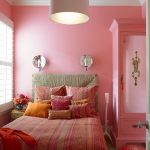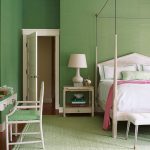When it comes to decorating a bedroom, choosing the right color can have a big impact on the overall feel of the space. The psychology of color plays a significant role in how we perceive our surroundings and can affect our mood, emotions, and even our behavior. Understanding the psychology of bedroom colors can help you create a space that is both visually appealing and conducive to relaxation and sleep.
One of the first things to consider when choosing a color for your bedroom is your own personal preferences. While certain colors may have specific psychological effects, it is ultimately important that you choose a color that you love and feel comfortable with. However, it can still be helpful to understand the general psychological associations of different colors to help guide your decision.
Blue is often considered one of the best colors for the bedroom, as it is known to have a calming and soothing effect. Research has shown that blue can help lower blood pressure and heart rate, making it an ideal choice for promoting relaxation and sleep. Lighter shades of blue can create a serene and tranquil atmosphere, while darker blues can add a sense of sophistication and depth to the space.
Green is another color that is associated with tranquility and relaxation, due to its connection to nature. Green can create a sense of balance and harmony in the bedroom, helping to promote feelings of peace and well-being. Soft shades of green can create a calming and restful environment, while brighter greens can add a pop of color and energy to the space.
Yellow is a warm and cheerful color that can help create a sunny and inviting atmosphere in the bedroom. Yellow is often associated with happiness and optimism, making it a great choice for those looking to create a bright and uplifting space. However, too much yellow can be overwhelming, so it is best to use it as an accent color or in lighter shades.
Purple is a color that is often associated with luxury, creativity, and spirituality. Lighter shades of purple can promote a sense of calm and relaxation, while deeper shades can add a sense of drama and sophistication to the space. Purple is also thought to stimulate creativity and inspire imagination, making it a great choice for those who want to create a dreamy and romantic bedroom.
While these are just a few examples of the psychology of bedroom colors, it is important to remember that color preferences are highly personal and can vary from person to person. It is also important to consider the size and layout of your bedroom, as well as the amount of natural light it receives, when choosing a color scheme. Ultimately, the most important thing is to choose a color that makes you feel happy and comfortable in your space.
 darbylanefurniture.com Interior design ideas with the latest interior inspiration
darbylanefurniture.com Interior design ideas with the latest interior inspiration




















